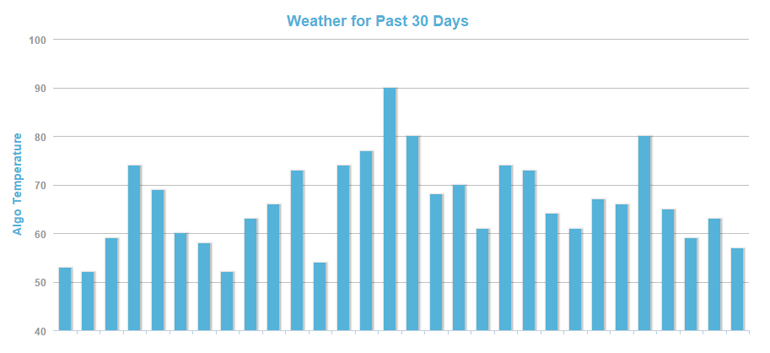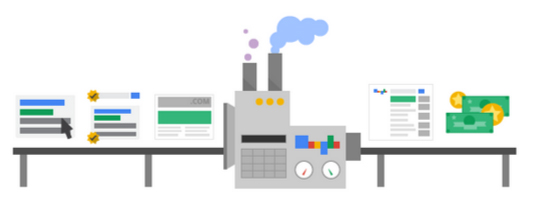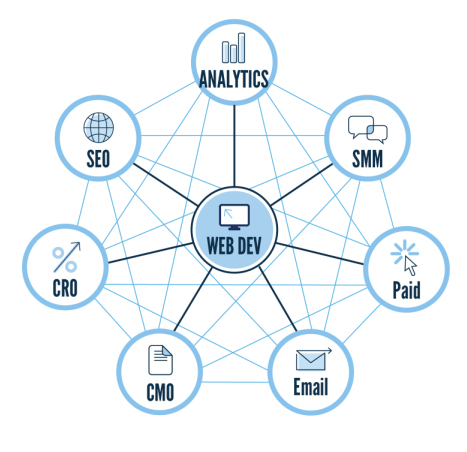
Search Engine Optimization you ask? No. Conversion Rate Optimization? No. Conversion Path Optimization? No.
Website Optimization.
History
Website Optimization is the true net result of Google cracking down on shady SEO practices. It started with the original Panda algorithm update in February 2011 and truly hit home with the Penguin algorithm update in April 2012. Subsequent updates to Panda, Penguin, Venice, Hummingbird, Pigeon and dozens more continued to reinforce Google’s stance on permissible SEO methods.

Many saw this move by Google through the simple and narrow lens of “No more gaming the system”. And that is a fair vision of Google’s intent. The fact is, Google still gets almost 90% of its $50 billion in yearly revenue from Adwords revenue, and the key driver of Adwords revenue comes from the belief that Google provides the best organic results. Nobody goes to Google with the express intention of clicking on a paid search advertisement. Luckily for Google, they often do.
Therefore, Google must protect the integrity of their organic results. If those results can be obtained through deceiving tactics, the confidence in Google organic results wanes. Individuals will choose to search on other search engines, thus fewer people click on paid ads, and Google’s revenue slumps. Not good for Google.
Immediate Impact
The SEO world changed dramatically and overnight. Many of those involved in black hat SEO tactics were penalized, sometimes causing a drastic decline to rankings and traffic. Many firms who were not involved in black hat tactics but with thin content or who were over-optimized lost rankings, traffic, conversions, and ultimately revenue. Google had successfully achieved their primary objective. SEO was going legitimate or going away altogether.
Long Term Impact
SEO did not go away. There are over 100 billion searches being performed each month. The intent of the searcher did not change and therefore the value of being front and center to those that search is still just as valuable. Searchers are individuals who - on their own time, with their own motives, in the moment they choose - enter specific keywords into a search engine that “pulls” the desired information, and they interact with it. In the search world, ranking does matter, but the rankings game has changed. The manner in which the game changed made all of the difference.
The principles of SEO did not change either. Onsite, offsite, and content still matter. They will always matter. But now other things matter as well. Let's look at a few examples:
Social Media
Offsite optimization, otherwise known as obtaining backlinks. Since the algorithm updates, firms may no longer simply obtain a volume of low-quality links. They must attract quality organic links, and there is no better way to get them than to create a piece of quality content that others read, share and like. Google’s search algorithm rewards sites who attract organic links in this manner. But how do we get this content distributed so that others will read and ultimately link back? Social Media was built for this function, and while it seems to have nothing to do with SEO, it has become an important facet.
Analytics
The level of analytics needed to perform SEO has entered a whole new stratosphere as a result of Google’s algorithm updates. Before the start of the updates, the best in the SEO business were not simply attracting organic links, they were looking at the common backlinks of all those ranking on the first page of results.
Today, this is not enough. We must analyze types, ratios, anchor texts . . . and we must simultaneously and preemptively eliminate low quality, irrelevant and non-authoritative links. Content creation itself is no simple matter.
We must analyze what content has been created by competition, understand the traction it has gained and use that data to complete our editorial calendars. Two years ago, this type of analytic work was sold as a separate package, a separate line item to compliment SEO. Today, that level of analysis is an everyday component of SEO.
Conversion Rate Optimization
CRO also took its place as a primary service due to algorithm changes. As the world began to wrongfully believe that “SEO was dead,” firms began to stress making the most out of the traffic already visiting your website.
Then came the thought that the primary goal of SEO was never rankings, it was conversions, and had been all along. Therefore, conversion rates needed to be increased to really maximize the ROI. Of course, other than paid traffic (which can typically be driven to landing pages), website visitors may enter the site from virtually any page. Which means each page of the website needs to be optimized.

Is that Conversion Rate Optimization work or SEO work? Is it possible to differentiate between the two?
Content Development
Before the Penguin and Panda algorithm updates, content development was an important aspect of SEO. However, the content conversations tended to be around simple text on the website, whether that text was in a fresh piece of content or on a static page.
Today, multiple types of content are an aspect of SEO - video, graphics, and images all play a role. Developing this type of content is well beyond a typical SEO’s job description. They will find themselves plugging into the PR department, the traditional marketing department, and the website designers . . . but with SEO as their primary objective. Unless they are embracing Website Optimization that is.
It turns out that SEO now includes social media marketing work, complex analytics work, conversion rate optimization and working with creatives throughout the organization. All of this in conjunction with traditional SEO onsite, offsite, and content work.
In fact, SEO is not the only service to be affected in this manner. Paid search marketing can no longer be implemented effectively without conversion rate optimization on landing pages. Website development must include SEO, CRO, and analytics work in order to achieve business goals. Virtually every service now naturally includes multiple additional services.
The walled silos of the digital marketing world have been torn down. And as they came down, this is what we find behind those walls:

How Clients And Agencies Must Respond
First, we must recognize that this is the brave new world. It is not going back. As such, our operations teams must evolve. There is no point in having an SEO department. Or a separate paid search department. There can only be a digital optimization team. A team that is cross-trained in all digital marketing solutions.
Services must be grouped together. Clients will still look to purchase SEO services, and the line item on invoices will continue to show SEO for now. However, behind the scenes, digital strategists must embrace and plan for a complete optimization solution that achieves our customers most important business goals. We are calling that solution Website Optimization.
Finally, the tools we use to drive results must evolve. We can no longer rely on SEO tools to help us think about keywords, onsite, offsite, and content alone. Those tools are becoming increasingly irrelevant, especially when looked at in a vacuum. Tools can and should begin to incorporate dozens of perspectives in the digital marketing world and be able to produce compelling, actionable data.
Welcome to the world of Website Optimization. Thank you, Google, for starting this new chapter in our world. It has been a wild ride so far, and we can’t wait to see what the future holds.
SEO
Analytics
Conversion Rate Optimization
About the author
Kyle Brigham
Kyle Brigham is the Chief Strategy Officer at Marcel Digital. He specializes in client services and project management, but also original Nintendo games and ping pong.